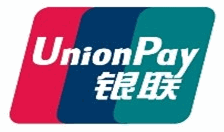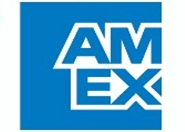How to Make Online Payment More Secure

For several years now there has been conversation about a cashless future. The rise of digital payment options has been undeniable for some time now, and while cash may not disappear completely anytime soon, the trends are clear: Cards and digital options are the way of the future.
This is something modern consumers are well aware of. Rather than blindly trusting in digital payments however, they are concerned about the security involved with the transition. And this concern has only been amplified by the COVID-19 pandemic and the ways in which it has accelerated movement toward remote payment and digital transactions. Studies have already indicated that concerning these changes, consumers value digital security even more than they appreciate the convenience of ecommerce.
This is perfectly natural, but from the perspective of ecommerce businesses it presents a challenge. There is a necessity now to provide secure online payment options, both for the direct benefit of the business and as a means of reassuring and attracting modern customers. Fortunately, there are a lot of different ways in which business leaders can address this challenge.
The following represent a good start.
Hire Accounting Help
The first decision can sometimes be one that consumers will never even be aware of. Accounting help is not something a lot of small, ecommerce business owners would have considered just a few years ago — particularly given the rise of apps and programs that can help to manage the numbers. However, with a surge in online degree and certificate programs for accounting students there is simply more help available in this space than before. And one of the leading career opportunities following online accounting degrees is becoming a financial analyst — for any sort of company that needs one.
Now, a financial analyst for a modern ecommerce business can do a lot of good work. But someone in this position can also help to establish a foundation for security efforts. With a clear and comprehensive understanding of both internal finances and customer payments, a business is better equipped to recognize and act on discrepancies or vulnerabilities.
Adopt Secure Platforms & Practices
Once a foundation of understanding is established, the most practical steps toward making online payments more secure involve the adoption of protective platforms and practices on the business side of matters. We have discussed security programs in the past that add depth to authentication practices and provide layers of what is essentially automatic security for digital payments. And additional concepts like two-factor user authentication, the use of reputable third-party platforms for online payments, reliance on secure, cloud-based information storage systems, and the employment of SSL certificates also factor in.
In short, an ecommerce business today has a responsibility to seek out platforms and payment methods that are inherently more secure for customers.
Protect Your Site
The platforms and practices just discussed have to do with the protection of the actual payment process. But savvy ecommerce business owners today should also take steps to protect their own sites (and by extension companies) from vulnerabilities and liabilities. This process can look a little bit different depending on the type of product or service being provided. Generally, though it involves a combination of legal safeguards and cyber liability insurance policies.
Keep Up with New Changes
Last but not least, an ecommerce business focusing on keeping digital payments secure also needs to be on top of new changes. While the broad transition to digital payment has essentially been solidified as an inevitability that is well underway, the specifics of that transition are still quite complex. Every few months, there is liable to be a new trendy payment processor, a new platform by which to accept credit card payments, or even a new development in cryptocurrency. Consumers are often interested in these changes, but it is up to online businesses to make sure that any new payment methods or processes adopted are built in with security as the top priority.
As stated, these efforts only represent the start of an ongoing process. But they should help an ecommerce business to get up to speed handling digital payments securely and in turn winning over modern consumers.
Written by Emma Christie for MobiusPay.
Return to Blog








* Created by
